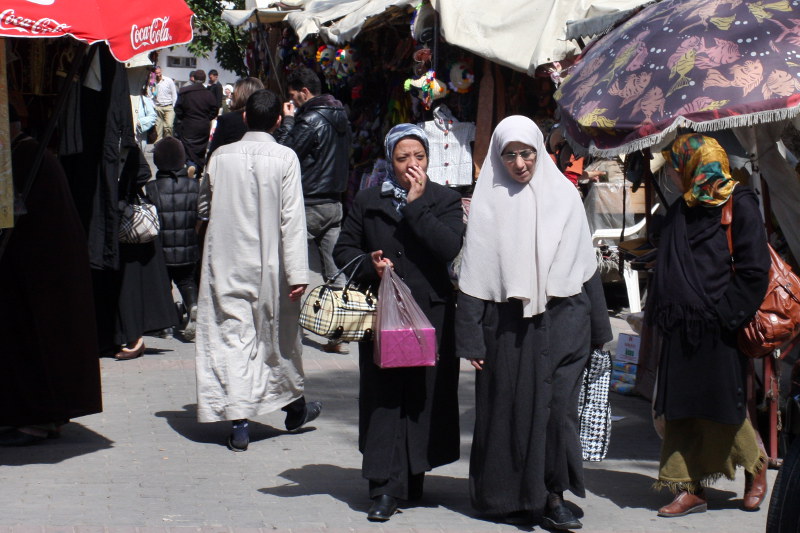Because of its strategic location, Tangier is a large melting pot of people, culture, religion, and language. Arabs, Europeans, Jewish, and Berbers are some of the people who make up this melting pot.
As an added bonus, the city has a colourful reputation that attracts artists, musicians, socialites, and literary greats from around the world. Some of the more famous people inspired by Tangier include William S. Burroughs, Tennessee Williams, the Rolling Stones, Barbara Hutton, Paul Bowles, Cecil Beaton, Joe Orton, Jack Kerouac, Truman Capote, Allen Ginsberg, Henri Matisse, and Yves Saint-Laurent.
Most residents speak Moroccan Arabic and French. Berber is a less common language but still spoken. From our experience, English and Spanish are also widely spread. French is the language used in government, business and in universities.
The country is hot, very hot, and yet clothing covers most of the body. This is both by choice and practicality. It’s a common belief that showing skin shows a lack of style in men and a lack of decency in women. And, not unlike everywhere else in the world, clothing indicates social and financial status. In India, I watched some of the best-dressed people come out of the poorest of housing. I suspect it’s the same in Tangier.
The hooded robe you see people wearing in the gallery is a djellaba. This is the traditional clothing of Northern Africa. The fabric and colour used varies and indicate certain statuses (e.g. brown often indicates bachelorhood). The hood is used to protect people from the elements (sun, sand, rain and the cold of the desert). The hood can also be used as a pocket when the weather is nice.
